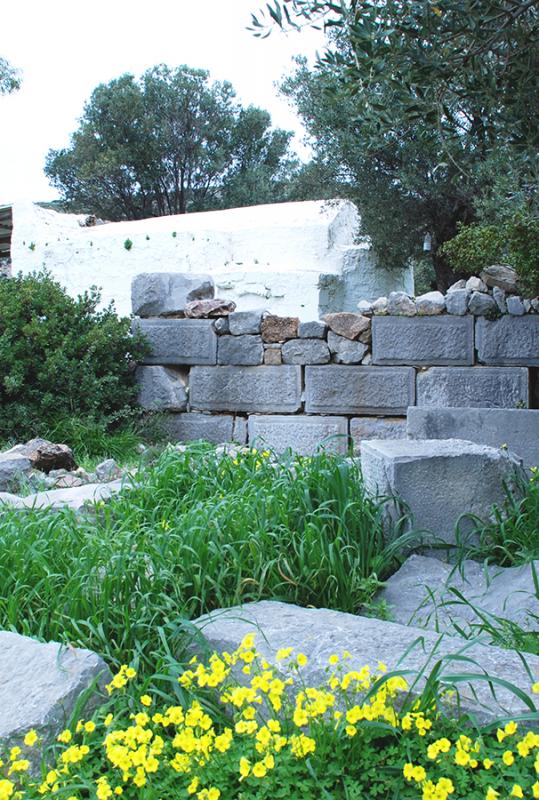The temple of Apollo was constructed at Fana, this calm cove with blue-green waters. The temple was an important and diachronic place of worship for the island, which began its activity in the 9th c. B.C. and well into the Archaic period. The foundations of the temple of Apollo Phanaios are visible today next to the chapel of Agioi Theodoroi, which was built at the exact same location. Here, Leto learned that she would give birth to Apollo on the island of Delos. This is why the temple was dedicated to Apollo Phanaios and it is considered as the Delion of Chios. During the Early Byzantine period, the sanctuary was turned into a Christian church. Materials from the ancient temple were used in the subsequent Christian churches, which were built on its ruins, just like the chapel of Agioi Theodoroi, that one can visit even today.
13. Kato Phana
Artists would call on god Apollo, the patron of the arts, for inspiration and guidance. And Homer was no exception. A hymn dedicated to Apollo, a god greatly celebrated in Chios, is attributed to this legendary poet.
Stories
The temple of Apollo
The worship of Apollo
The successive construction phases of the temple which were brought to light by the archaeological excavations tell of the cult of Apollo in Chios since the Geometric period. The Archaic temple was probably destroyed during the Ionian revolution of 494 B.C. and it was rebuilt in the first half of the 5th c. B.C. Its architectural parts, made of grey-blue marble from Latomi in Chios, as well as the white marble used for its columns and decoration, reveal that the temple of Apollo Phanaios was a majestic, large temple and quite important for Chios and the Ionian cities. The temple of Apollo Phanaios could compete in its architecture the Heraion of Samos, the temple of Artemis at Ephesus or the temple of Apollo at Meletus Its richness and splendor is documented by the vases, figurines, jewelry and coins, the Egyptian scarabs and faience statuettes found during the excavations.
When Homer praised Apollo
The so-called Homeric Hymns, thirty-three in total, constitute part of the ancient tradition of rhapsodies, as well as one of the great literary mysteries, given that their writer’s identity was an issue of controversy, even in ancient times. They were dedicated to the gods and recited as preludes to various epic poems. The Homeric Hymn to Apollo is one of the most ancient and long hymns. At the end of its second part, in line 172, the poet describes himself as a blind man living in rocky Chios. The historian Thucydides attributes the Hymn to Apollo to Home, as it is considered that the creator speaks of himself in that specific line. Tip: For a fuller study on the descent of Homer from Chios and the century-long perception that the poet came from this island, you can also consult the book by Athena K. Zacharou-Loutrari, ΟΜΗΡΟΣ ΧΙΟΣ ΑΟΙΔΟΣ. Η Χίος διεκδικεί και τιμά τον ΄Ομηρο ανά τους αιώνες (‘HOMER, THE POET OF CHIOS. Chios claims and honors Homer throughout the centuries’ – original in Greek).
Powered by Clio Muse Tours
